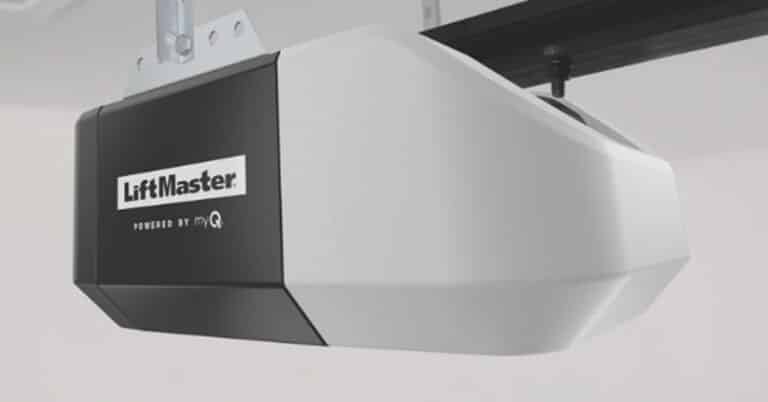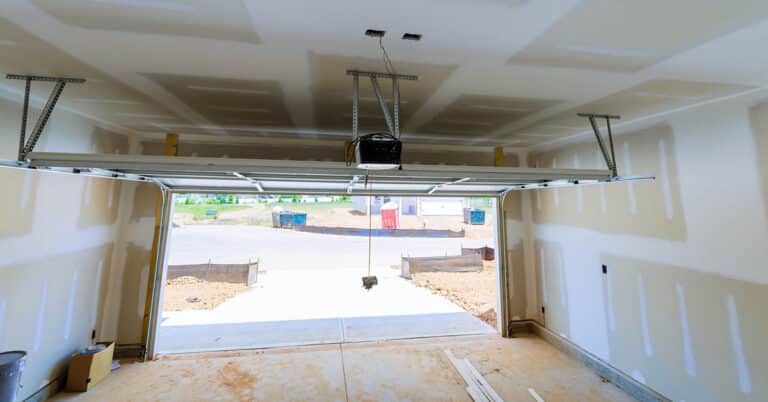A plain-English guide to the protections built into your garage door opener
Safety is not a premium add-on. Modern systems share the same baseline protections to help prevent injuries and damage. Here is what those features are, how to test them, and when a garage door repair visit is the right next step.
TL;DR
- Photo-eyes stop the door when the beam is blocked; the door must also reverse on contact.
- These protections are part of a shared safety baseline for residential systems.
- Simple monthly tests keep a small problem from becoming a big risk.
- If tests fail, stop using the unit and schedule service to restore safe operation.
The safety baseline every home should have
What UL 325 covers in everyday terms
Modern residential systems follow a safety standard – UL Standard – that focuses on hazards like entrapment and electrical shock. You do not need the clause numbers to benefit from it. What matters is that your system must detect a person, pet, or object and avoid closing on it. That is why you have two key protections: a light-beam sensor across the doorway and a reversal system that changes direction on contact.
Think of this baseline as the rules of the road. Any compliant garage door operator, whether basic or premium, must meet it. Your job is to run quick checks so those protections continue to work as intended.
Photo-eyes: the beam that prevents bad surprises
Photo-eyes sit near the floor on each side of the opening and send a beam across the doorway. If the beam is blocked, the unit should not close. Once a month, press “close,” then wave a broom or a box through the beam. The garage door should stop or refuse to start. If it keeps closing, clean the lenses, make sure both LEDs are solid, and re-align the brackets. If it still fails, stop using the system and get help. Guidance from the trade association, DASMA, underscores the importance of this protection.
[Safety Tip]
Never bypass or tape over photo-eyes. If the beam test fails, fix the cause and keep the protection in place.
Safety reversal: the contact test that saves bumpers and toes
Place a 2×4 on its flat side under the door and close it. The door must touch the block and immediately reverse. This test confirms the system reacts to contact. If the door hesitates, pushes, or fails to reverse, stop using it. Re-check settings and get a technician to restore the baseline. A quick test today is much cheaper than repairing a bent panel or, worse, treating an injury.
The settings that make protections work right
Force and travel limits: why “stronger” is not safer
Force settings control how hard the unit pushes. Travel limits tell it where to stop. Too much force can mask a door problem and delay reversal. Too little force can cause nuisance stops. If your door starts and then reverses with nothing in the way, that is often the system sensing strain. Correcting a tight spot in the tracks or a balance issue usually resolves it. Pushing the “more force” button is not the answer.
[Myth vs Fact]
Myth: “If I increase force, it will power through.”
Fact: The garage door operator system must stop for obstructions and reverse on contact. More force defeats the point and can be unsafe.
Door balance: the hidden driver of safe operation
A healthy door stays put when lifted halfway by hand. If it slams shut or is heavy to lift, the springs may be out of balance. An unbalanced door makes the system work too hard and can trigger force faults. Balance and spring adjustments are not DIY tasks. They store a lot of energy and require training. If your quick checks point to balance issues, stop and schedule service.
Extra protections you may already have
Manual release: your plan B when power is out
Every compliant system includes a manual release, usually a red cord. Practice with the door closed. Pull the cord straight down to disengage, lift the door by hand, and then re-engage according to the label. Knowing this ahead of time keeps you from being stranded during an outage.
Battery backup and auto-lock: power and peace of mind
Some wall-mounted systems include battery backup so you can open and close during an outage, plus an automatic deadbolt-style lock that holds the door closed. Test backup power once a year by unplugging the unit and running a cycle. Replace the battery when the unit reports a low charge so your plan B actually works.
Alerts and beeps: treat changes like useful clues
Flashing lights, beeps, or service reminders are there to get your attention. They can point to sensor misalignment, low battery, or repeated force faults. Clean the lenses, confirm alignment, and run the two tests. If alerts return, write down what you see and when. A short note helps a technician fix the right thing quickly.
Simple monthly routine to keep safety on track
A three-step checklist you can finish in five minutes
First, wipe the photo-eye lenses with a soft cloth and confirm both LEDs are solid. Second, run the beam test. Third, perform the 2×4 reversal test. While you are there, listen for new grinding or clanking and watch for jerky motion. If anything fails or feels off, stop using the garage door opener and schedule service. Small changes are your early warning.
When a quick check turns into a garage door repair call
If either safety test fails after basic cleaning and alignment, or if the system shows repeated force faults, it is time for a professional. Many issues trace back to the door hardware, not the motor itself. Fixing rollers, tracks, or balance brings the system back within its safety baseline and prevents repeat problems.
Frequently asked questions
Do premium models have better safety than basic models?
No. Modern residential systems share the same core safety baseline. Premium units add comfort, like battery backup or reduced vibration, but the required protections—photo-eyes and reversal on contact—apply across the board when the system is installed and maintained correctly.
How often should I test safety features?
Do two tests each month. Block the beam so the door will not close, and then do the 2×4 reversal test. If either fails after you clean lenses and re-align brackets, stop using the system and schedule a visit. These quick checks confirm that the protections are still doing their job.
Are blinking lights always about the sensors?
Often, but not always. Blinks can also signal force faults or a low backup battery on some wall-mount units. Clean and align the photo-eyes first. If blinks return or the door keeps reversing, note what you see and call a professional to check balance and settings.
What should I do if the door starts to close with the beam blocked?
Stop using the unit. That behavior means a core protection may not be working. Clean the sensors, confirm alignment, and test again. If it still closes, schedule service right away to restore the baseline before someone gets hurt or the door is damaged.
Keep your family safe and your door reliable
Do the beam and reversal tests monthly, clean the lenses, and treat new sounds or alerts as helpful signals. If a check fails, do not force it. We will inspect the system, restore safety, and help you prevent the issue from coming back.
Sources
- DASMA — DASMA TDS 353 | Gate Operators and the ANSI/UL 325 Standard — https://www.dasma.com/wp-content/uploads/pubs/TechDataSheets/OperatorElectronics/TDS353.pdf — date accessed 2025-09-17
- DASMA — DASMA TDS 351: Federal and State Residential Garage Door Operator Legislation Guidelines For Dealers and Installers — https://www.dasma.com/wp-content/uploads/pubs/TechDataSheets/OperatorElectronics/TDS351.pdf — date accessed 2025-09-17
- Devanco Canada — LiftMaster Wi-Fi Garage Door Opener Owner’s Manual (Models 81550/81650/81600/81602/83650-267) — https://www.devancocanada.com/files/manuals/81650_Installation-manual.pdf — date accessed 2025-09-17








